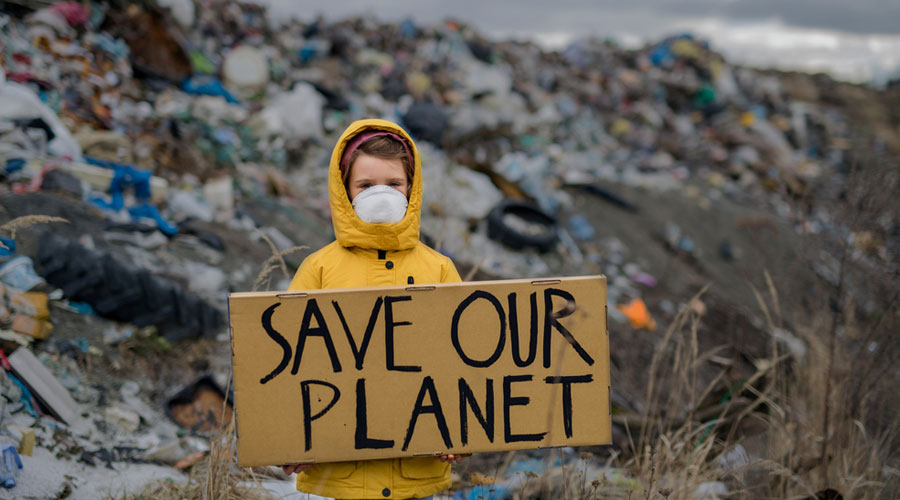After the COP15 conference adopted a historic deal here last week to protect nature, experts believe the key challenge for India now is to align the national goals with the Global Biodiversity Framework (GBF) and take effective capacity-building measures at all levels.
The 15th Conference of Parties (COP) to the Convention on Biological Diversity (CBD) ended on a high note with nearly 200 countries, including India, adopting a historic deal to preserve nature and reverse damage to ecosystems after four years of fraught negotiations.
India, which is one of the Parties to the convention, pushed for Digital Sequence Information (DSI) to be considered under the CBD’s access and benefit sharing mechanism, among many other targets during the run-up to the conference and through the anxious final moments until the Kunming-Montreal Global Biodiversity Framework (GBF) became a reality.
The Indian delegation was led by Bhupender Yadav, Minister of Environment, Forest and Climate Change along with a team of officers from the government.
“India negotiated strongly and held discussions with the COP Presidency and the Secretariat of the Convention on Biological Diversity before the final Global Biodiversity Framework was put up for adoption,” Yadav said.
"The suggestions from India to keep all the goals and targets, globally, were accepted, along with other propositions. India’s pitch for Lifestyle for Environment (LiFE), and common but differentiated responsibilities and respective capabilities found an echo in the GBF,” he added.
The LiFE initiative was introduced by Prime Minister Narendra Modi at COP26 in Glasgow last year. It is a campaign to encourage “mindful and deliberate utilisation, instead of mindless and destructive consumption” to protect and preserve the environment, in line with the Framework’s Target 16 on sustainable consumption.
Vinod Mathur, former chairperson of National Biodiversity Authority (NBA) agreed, saying the Indian delegation made a significant contribution in developing consensus on several issues relevant to the developing ‘South’.
In fact, a majority of biodiversity-rich countries are located in Asia, Africa, and South America between the Tropic of Cancer and the Tropic of Capricorn.
The Chinese-brokered deal is aimed at saving the lands, oceans, and species from pollution, degradation, and climate change.
The GBF aims to conserve 30 per cent of land, inland water and ocean ecosystems by 2030, also known as 30 by 30.
India is already a member of the High Ambition Coalition (HAC), a group of over 113 countries that aims to bring 30 per cent of the world’s geographical area under conservation by 2030.
The Framework also commits countries to “take effective legal, policy, administrative and capacity-building measures at all levels, as appropriate, to ensure the fair and equitable sharing of benefits that arise from the utilisation of genetic resources and from digital sequence information on genetic resources, as well as traditional knowledge associated with genetic resources.” DSI, which was adopted as part of the historic deal to save biodiversity at the COP15 conference, will ensure flow of funds to countries like India from users such as biotechnology companies which access its biodiversity – and related genetic information, experts say.
“With DSI becoming a reality, developing countries that are rich in biodiversity would benefit from funds to conserve their biodiversity. This will help the indigenous communities who conserve biodiversity and associate traditional knowledge in a big way,” NBA Secretary Justin Mohan added.
Guido Broekhoven, Head of Policy Research and Development, WWF, said DSI will benefit India by financing more ambitious efforts on conservation that the country can implement.
“I think there will be increased biodiversity finance related to these increased efforts for conservation. It is also clear that the transformation of these sectors to try and fund biodiversity loss needs to happen in an equitable way,” he told PTI.
Souparna Lahiri, Climate Policy Advisor, Global Forest Coalition, noted that with GBF having been adopted, India will have to take effective legal, policy, administrative and capacity-building measures at all levels.
"These measures should be appropriate to ensure the fair and equitable sharing of benefits that arise from the utilisation of genetic resources and from DSI on genetic resources, as well as traditional knowledge associated with genetic resources, and facilitating appropriate access to genetic resources,” Lahiri told PTI.
This is especially important as one of the most contentious issues in the negotiations was the finance package to support conservation efforts globally, and particularly in developing countries.
The deal commits to progressively increase the level of financial resources from all sources by 2030, mobilising at least USD 200 billion per year. This represents roughly a doubling from a 2020 baseline.
A notable achievement is also the commitment to USD 20 billion in international finance flows to developing countries by 2025 and USD 30 billion by 2030.
Broekhoven of WWF International noted that the goals and targets of the GBF are global in nature.
“Countries including India now need to translate them into national goals and targets through their national plans,” Broekhoven said.
“For countries like India, that means it needs to assess what is relevant, what it can do, to contribute to achieve its goals and targets,” he said.
The key challenge now, Mathur said, is to initiate and ensure the expeditious implementation of the framework and to align the National Biodiversity Strategies and Action Plans (NBSAPs) with the GBF.
There is still a long way to go before India can realise its commitments to GBF.
The 23 targets in the accord also include cutting environmentally “harmful” farming subsidies, reducing the risk from pesticides, and tackling invasive species.
Earlier, India had said at the conference that a numerical global target for pesticide reduction in the agriculture sector is unnecessary and must be left for countries to decide.
It also said that support to the agriculture sector should not be targeted for subsidy elimination.
Broekhoven noted that often subsidies are not designed to harm nature, and have a societal purpose to support farmers and fisherman.
“That needs to continue but in such a way that doesn’t harm nature. That way we can have a win-win situation,” Broekhoven told PTI.
He also expressed happiness that “agroecology” has been adopted and recognised.
“That is an approach recognised by the Food and Agriculture Organization (FAO) as established principles that work towards reducing and finally eliminating the use of pesticides.
"We know that this can be done in such a way that small-scale farmers can continue to produce enough food,” he added.
"In India, such practices are known more commonly as natural farming or community-managed natural farming," he said.
India will also have to ensure that areas under agriculture, aquaculture, fisheries and forestry are managed sustainably, in particular through the sustainable use of biodiversity, including through a substantial increase in the application of biodiversity-friendly practices, said Lahiri.
"The country will have to identify by 2025, and eliminate, phase out or reform incentives, including subsidies, to industries and processes which are harmful for biodiversity, in a proportionate, just, fair, effective and equitable way,” he added.
Another highlight of COP15 is the adoption of Target 22 and Target 23 which aims to ensure gender equality and rights of indigenous people in the implementation of the framework through a gender-responsive approach where they have the opportunity and capacity to contribute to the four objectives of the Convention.
Archana Soreng, an environmental activist belonging to the indigenous Kharia Tribe from Bihabandh Village of Rajgangpur in Sundergarh, Odisha, noted that it is critical to recognise the role and contribution of women in biodiversity conservation especially within Adivasi, tribals, forest-dwelling communities and other marginalised communities, and to moreover support and protect them.
“Target 22 recognises respecting traditional knowledge of the indigenous and local communities (ILPCs) and full protection of environmental defenders,” Soreng told PTI. Shruti Ajit from the UN CBD Women Caucus pointed out that the contribution of women in India towards biodiversity is still invisible and needs to be highlighted.
“We also hope that the new National Biodiversity Strategies and Action Plans (NBSAPs) targets based on the adopted GBF being envisioned is aligned with the Gender Plan of Action so that we have a gender-responsive mechanism to address the inequalities that exist,” she told PTI.
“Adoption of Target 23 as part of GBF will pave the way for women across the world fighting for their agency and dignified living in harmony with nature,” she added.
Lahiri noted that India has to make a paradigm shift in the concept of establishing and governing protected areas recognising the land and territories of tribals, and also the rights of tribals and other traditional forest dwellers including their free, prior and informed consent.
“India will have to follow an inclusive process including participation of communities and other stakeholders while preparing its national biodiversity strategy and action plan,” Lahiri said.
“The country has to mobilise domestic finance for biodiversity conservation, protection and restoration. It also needs to reduce the use of harmful chemical and synthetic fertiliser and pesticides by half,” he added.
Except for the headline, this story has not been edited by The Telegraph Online staff and has been published from a syndicated feed.












